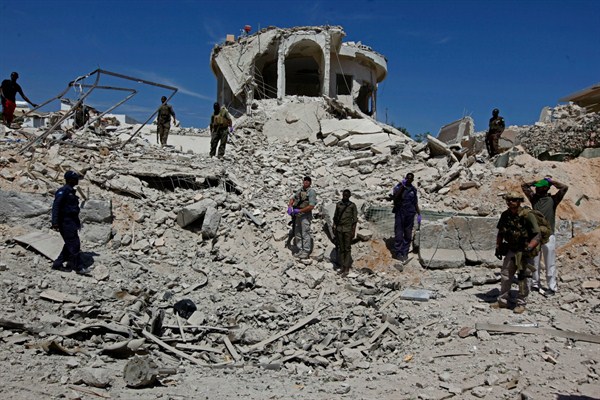Editor’s Note: Every Friday, WPR Associate Editor Robbie Corey-Boulet curates the top news and analysis from and about the African continent.
One of Donald Trump’s first policy moves related to Africa was his decision last March to expand the Pentagon’s authority to carry out airstrikes in Somalia, home of the al-Qaida-linked Islamist extremist group al-Shabab, as well as a growing presence of fighters affiliated with the self-proclaimed Islamic State. The decision heralded an increasingly aggressive role for the U.S. military in Somalia, the extent of which is starting to come into focus.
Beginning Nov. 9, the U.S. carried out airstrikes for seven straight days against Somalia-based militants, killing more than 45 fighters. The recent operations have included the first drone strikes specifically targeting Islamic State fighters.
U.S. Africa Command disclosed Thursday that there have been 28 airstrikes in Somalia so far this year, 15 of which have taken place since Sept. 1. There were only 15 airstrikes against al-Shabab in all of 2016, according to the Bureau of Investigative Journalism. Despite the numbers, Lt. Gen. Kenneth F. McKenzie, Jr., director of the Pentagon’s Joint Staff, denied there had been a “ramp-up” in operations, saying the strikes were a function of the “density of targets.”

